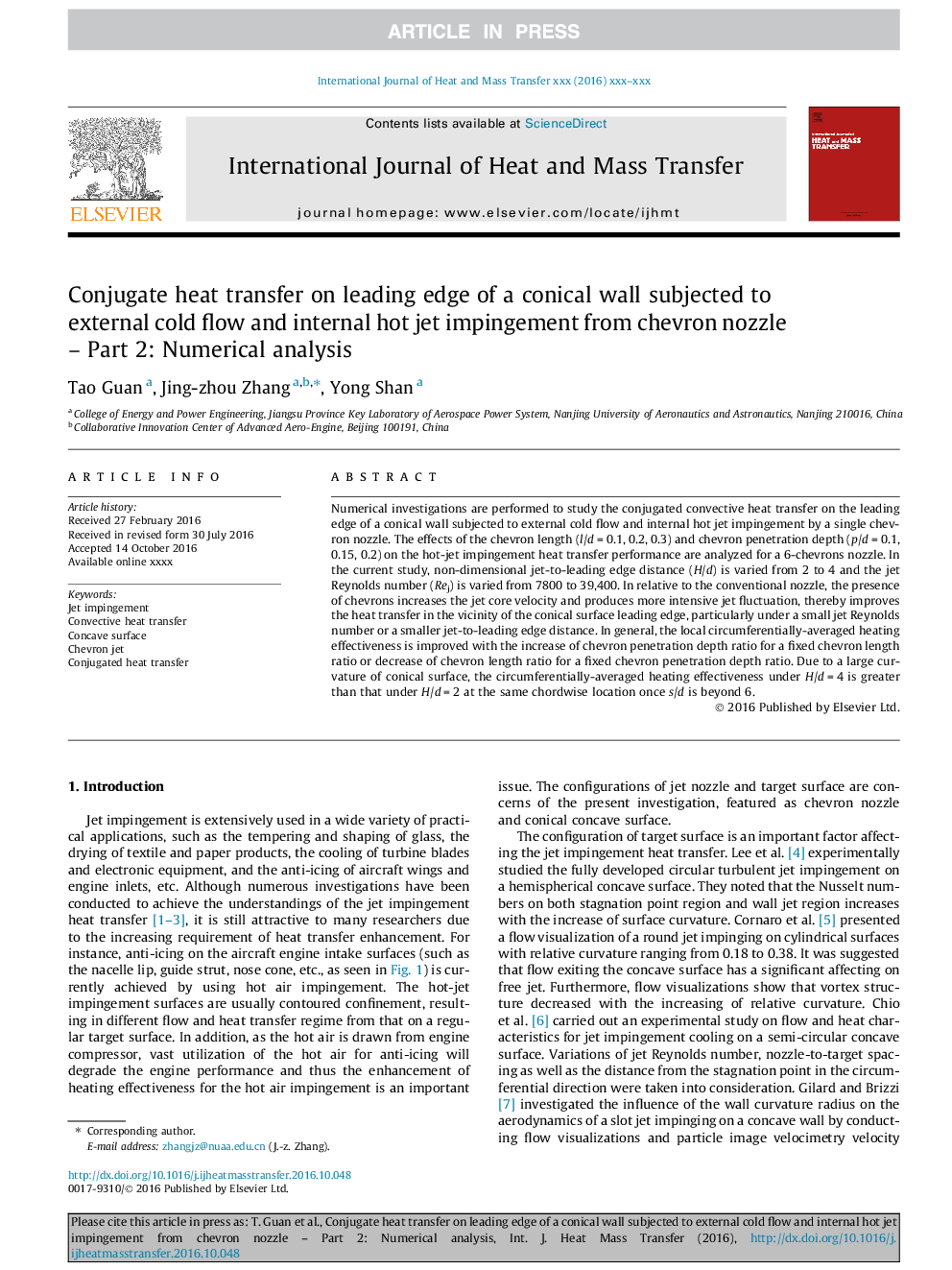| Article ID | Journal | Published Year | Pages | File Type |
|---|---|---|---|---|
| 4994775 | International Journal of Heat and Mass Transfer | 2017 | 17 Pages |
Abstract
Numerical investigations are performed to study the conjugated convective heat transfer on the leading edge of a conical wall subjected to external cold flow and internal hot jet impingement by a single chevron nozzle. The effects of the chevron length (l/d = 0.1, 0.2, 0.3) and chevron penetration depth (p/d = 0.1, 0.15, 0.2) on the hot-jet impingement heat transfer performance are analyzed for a 6-chevrons nozzle. In the current study, non-dimensional jet-to-leading edge distance (H/d) is varied from 2 to 4 and the jet Reynolds number (Rej) is varied from 7800 to 39,400. In relative to the conventional nozzle, the presence of chevrons increases the jet core velocity and produces more intensive jet fluctuation, thereby improves the heat transfer in the vicinity of the conical surface leading edge, particularly under a small jet Reynolds number or a smaller jet-to-leading edge distance. In general, the local circumferentially-averaged heating effectiveness is improved with the increase of chevron penetration depth ratio for a fixed chevron length ratio or decrease of chevron length ratio for a fixed chevron penetration depth ratio. Due to a large curvature of conical surface, the circumferentially-averaged heating effectiveness under H/d = 4 is greater than that under H/d = 2 at the same chordwise location once s/d is beyond 6.
Related Topics
Physical Sciences and Engineering
Chemical Engineering
Fluid Flow and Transfer Processes
Authors
Tao Guan, Jing-zhou Zhang, Yong Shan,
